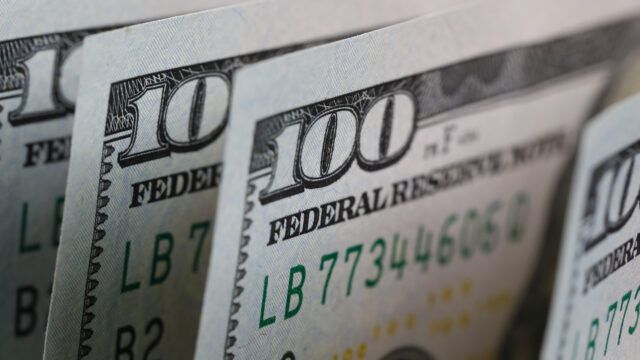No matter what the cause, more US government spending is coming, and investors need to deal with it.
This is the view of Jim Caron, chief investment officer of the portfolio solutions group at Morgan Stanley Investment Management (MSIM).
The potential dominance of fiscal policy over monetary policy is a market risk that worries the CIO the most, he said in MSIM’s outlook for the second half of 2024.
“Why? Financial markets have many mechanisms to price monetary policy uncertainties, but have none to price fiscal policy,” Caron explained. “Has anyone ever heard of fiscal policy futures? No, because they don’t exist.”
Caron said he expects fiscal dominance will start to “control the narrative and significantly impact the market” as the US enters its presidential election in the coming months.
He also expects fiscal policy related to taxes and spending will be a key theme going well into 2025.
“Over the last few years, we have been fortunate that fiscal largesse has not yet unanchored inflation expectations,” he said. “However, the next six to 18 months will be critical in determining whether that is in fact the case.”
“As US government spending, debt and deficits continue to increase its cumulative influence over economic activity, and geopolitical issues are increasingly resolved through tariffs, fiscal policy may then dominate monetary policy, which has the effect of increasing market uncertainties and risk premia.”
Regardless of who wins the US election, he believes this is the likely path going forward.
“The consequence to markets is that higher risk premia is a headwind to asset prices,” he said, warning that the adverse effects of a rise in risk premia may not be evenly distributed across asset prices.
He said: “This means there can be winners and losers depending on what sectors fiscal policy influences most.”
US deficit is on a dangerous path higher
Caron warned that excessive government spending, debt, deficits and tariffs all lead to higher inflation.
“No matter what the cause, government spending is here, and as investors, we have to deal with it,” he said.
He warned that based on Congressional Budget Office (CBO) projections, the US deficit is on “a dangerous path higher” unless spending habits change.
Although the primary deficit – the difference between government revenues and spending – is projected to remain stable at around 2% (roughly equivalent to GDP growth estimates), Caron flagged interest payments on the debt as a concern.
He said: “The interest payments on the debt are ultimately the culprit that drives the total deficit higher, leading to a vicious cycle that creates economic instability.”
“It is important to note that a total deficit level of 3% is consistent with economic stability, not upwards of 5% as shown by the CBO projections. This is particularly nefarious as the possibility of higher inflation can accelerate the rise in interest rates.”
Caron warned that it may be too much to ask foreign investors in US Treasuries to accept a 1.8% real return (long-term potential real GDP growth) with a US projected fiscal-year 2024 marketable debt-to-GDP ratio at close to 100% and a total deficit-to-GDP at 6%, with a primary deficit at 2.9%.
“A 1.8% real return may be too low relative to these risks and a discount in asset prices may be required,” he said. “This is where the tension lies.”
Although a devaluation of the US dollar could be a potential “release valve” for this tension, MSIM deputy CIO Jitania Kandhari asserts that the value of the dollar is influenced by factors beyond just fiscal deficits.
She said: “Our research over the last 50 years shows no significant correlation between persistent deficits and currency weakness in the US.”
“High deficits have not consistently led to a depreciation of the dollar. This is probably because US has monetary sovereignty, strong institutions and control over its own currency.”
She explained that the dollar is more influenced by relative interest rate and growth differentials between the US and the rest of the world, and attributed its recent strength to the rapid interest rate hikes from the Fed to tackle inflation, combined with US economic growth outpacing the rest of the world.
That being said, she argued that interest rate and growth differentials should favour non-US currencies at this stage of the growth and interest rate cycle.
“Now, economic activity is showing strength beyond America’s borders, and we find a less compelling case for US economic growth to continue outperforming the rest of the world,” she said.

















